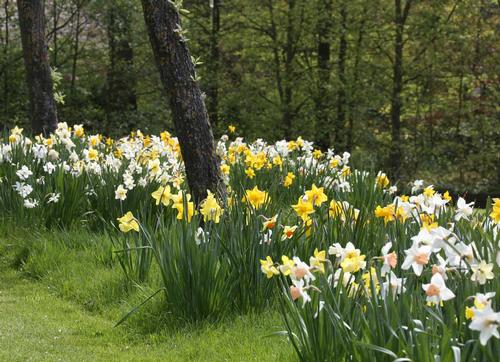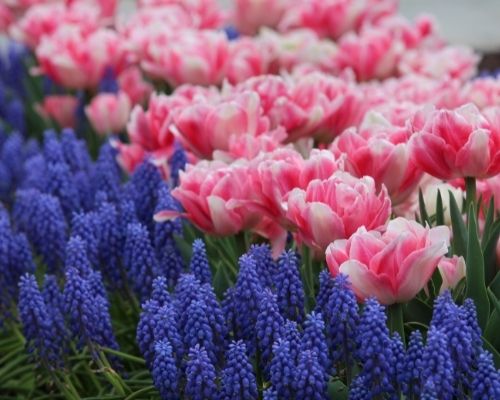Creating a Carpet of Colorful Spring Blooms
One of the best ways to get an impressive display of spring flowers -- without a lot of work -- is to plant bulbs that will multiply and re-bloom year after year. Good candidates include daffodils, crocus, scilla, chionodoxa, snowdrops and some types of alliums. All of these carefree bulbs can fend for themselves with little or no attention. As the bulbs settle in and begin to naturalize, a few hundred blooms can become thousands.
Naturalized spring bulbs give gardens and landscapes a look of carefree abundance. Drifts of daffodils beside a stream bank, sweeps of blue scilla beneath shade trees and clusters of snowdrops along a stone wall are intensely appealing and require very little effort.
Where to Naturalize Spring-Blooming Bulbs
Bulbs are easy to please. They aren’t fussy about soil as long as it isn’t soggy. Though they do need moisture during the spring and fall, during the summer months when the bulbs are dormant, they actually prefer dry soil.
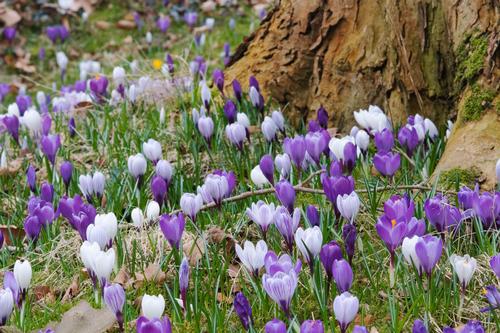
Spring bulbs should be planted where they will get at least 4 hours of bright light each day. They bloom before most deciduous trees have leafed out, so even shady areas will do. Possible planting locations include lawns, beneath shrubs, beside stone walls, in woodlands and hedgerows, in meadows, along stream banks and ponds and at the sides of roads and pathways.
To achieve a natural look, plant your bulbs in a random, informal pattern. The bulbs should look like they sprang up on their own. Plant small bulbs such as chionodoxa and snowdrops in groups of 30 or more bulbs. Plant daffodils in irregular clusters of 5 to 9 bulbs.
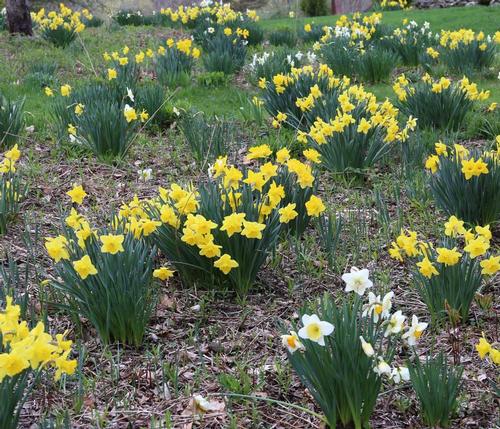
Two Options for Planting Naturalized Bulbs
1. Choose your planting location and gently toss a handful of 5 or more bulbs on the ground. Use a trowel or bulb planter to plant the bulbs where they fall. Planting holes should be 3 times deeper than the height of the bulb. Settle the bulb into the bottom of the hole, backfill with some loose soil and then replace the soil, turf, groundcover or mulch. This method works well for daffodils, but for smaller bulbs you may want to consider the next technique.
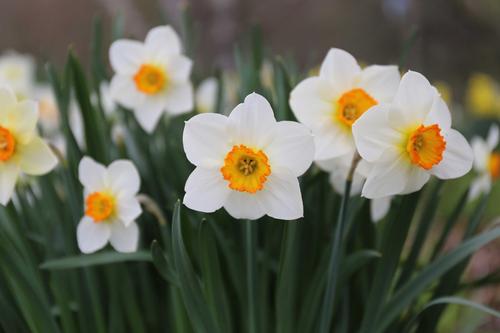
2. Prepare the planting area by pulling away mulch or organic debris. If you're planting bulbs into a lawn, you can cut and roll back a section of turf. Use a garden fork or shovel to loosen the soil several inches deep. If the soil is dense or compacted, you can also dig in some compost or peat moss.
Rake the area smooth and then scatter a handful of bulbs. Use your fingers to push them into the soil about 3” deep. If you are planting in a lawn, slash the underside of the turf with a knife before replacing it over the bulbs. This will help the bulbs make their way up through the root mass.

Caring for Naturalized Bulbs
Like all plants, bulbs use their foliage to produce the energy they need to flower and multiply. In naturalized plantings, bulb foliage should be allowed to yellow and die back after flowering. If the foliage is mowed down or cut back too soon, the bulbs may survive but not have enough energy to put on a good show of flowers.
The foliage of small bulbs comes and goes quickly, so lawns with naturalized snowdrops, crocuses or scilla can be mowed by mid to late May. The foliage of larger bulbs such as daffodils, muscari and bluebells, can be hidden by tall grass, other perennials or shrubs.
In relatively fertile soils there's no need to fertilize naturalized bulbs. If the soil is poor, or you want to speed up the naturalizing process, you can broadcast granular fertilizer over the area and let the rain water it in.
